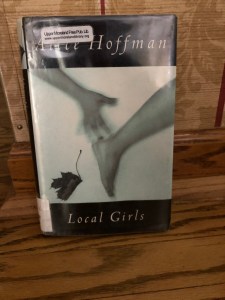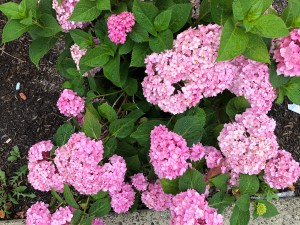Well, I’ve been real tempted lately to pen an essay about the repressive, heads-up-their-asses people in my country who continue to believe in demagogic, riot-inciting Donald Trump and embrace his outrageous lies about the 2020 election having been stolen from him.
On the other hand, I haven’t been real tempted lately to have my blood pressure head into the stratosphere. So, I’ll stay calm by moving in my semi-natural direction. Towards the light, you dig. What follows, therefore, are a few words about beauty, a quality I found a couple of weeks ago in, among other things, a book, a song and some flowers. Away we go!
First up, the book: Local Girls is a collection of stories, by Alice Hoffman, about Gretel Samuelson and her small circle of relatives and friends. The stories are presented chronologically, and appeared in various publications before being gathered and published in one volume in 1999.
Not exactly a novel (some stories are narrated by Gretel, the others are in the third-person), but close enough, Local Girls follows Gretel from age 11 or 12 into her mid-20s. It’s set in suburban Long Island (which is near New York City), and is not the happiest of tales. Drug addiction and serious illness are among the book’s prime themes.
Nevertheless, drollness permeates the proceedings, partly by way of the sharp observations and bon mots of Gretel, her best friend Jill, Gretel’s mother Franny, and Gretel’s adult cousin Margot. Overall, Local Girls struck me as hard-as-nails realistic, despite the inclusion, unnecessary in my opinion, of some mystical occurrences. (Hoffman, I gather, is known for doing this in her works.) The book took me by the arm and then spoke intimately to me. It is damn well alive.
What got to me more than anything about Local Girls is the absolute beauty of much of its language. Time after time Hoffman took my breath away. Before ending this short discussion of Local Girls, I’ll leave you with three examples of Hoffman’s way with words.
It was a bad summer, and we all knew it. We liked to phrase it that way, as if what was happening was an aberration—a single season of pain and doubt—instead of all-out informing people that our lives were falling apart, plain and simple as pie.
She had been thinking about sorrow for so long she was amazed to hear the sound of love. What a foreign language it was. How odd to an ear unused to such things.
The streetlamps cast a heavy glow, the light of a dream you’re not quite finished waking from.
Yes, Hoffman has more than got the touch.
Now for the song: I’ve seen Brandi Carlile on a couple of TV shows and heard her music pretty often on the radio. I think she’s good but certainly not great. However, her recording Save A Part Of Yourself, is another matter. To me, it’s fab. The song, which Carlile co-wrote and sings lead on, was released in 2012.
Save Part Of Yourself concerns a love relationship that, though ended, has not been forgotten by one of its two parties. She hopes that her ex will not throw away memories of her. Such a lovely composition, so tender and imbued with longing. Yet, it also sparkles. That mandolin riff that enters five seconds into the tune, those handclaps, the joyful whoo-hoo-hoos. I for one cannot resist them.
Save Part Of Yourself’s main message, I think, is that remembrance can help us heal and make us better individuals. Who would argue with that? Here it is, following which we’ll turn our attention to flowers.
The day in which I am described as a knowledgeable identifier of flora isn’t about to arrive any time soon. Yeah, on a good day I’m able to look at a tulip and say, “Yup, that’s a tulip.” Ditto for a pine tree and a maple tree. But my scope doesn’t extend all too far beyond that. Still, that doesn’t stop me from going out to admire nature’s wonders. Hell, I’d be heartbroken if I couldn’t.
And I’m glad when my botanical expertise expands. Such as when I learned last month that a flowering plant I was gazing at during a visit to New Hope, Pennsylvania, a funky, former artists colony to which visitors often throng, was an example of a hydrangea bush. The plant impressed me. Thus, while walking and driving around my town a few days later I kept my eyes open for hydrangeas. And I found some, photographing two of them. Hydrangeas, I believe, were at the height of their flowering powers in my region (greater Philadelphia) at the time that I took these portraits. The flowers are sincerely beautiful.
(Please don’t be shy about adding your comments. Mucho gracias.)


